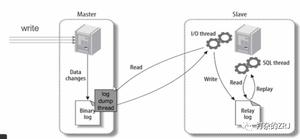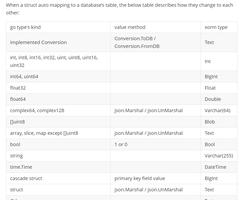高可用|repmgr构建PostgreSQL高可用集群部署文档【建议收藏】

作者:颜博 青云科技数据库研发工程师
目前从事 PostgreSQL 产品开发工作,热衷于 PostgreSQL 数据库的学习和研究
上一期我们介绍了 PG 集群复制管理工具 repmgr,能够轻松的搭建出 PostgreSQL 的高可用集群,在主节点宕机后,挑选备机提升为主节点,继续提供服务。
本文将详细介绍 repmgr 构建 PostgreSQL 高可用集群的部署过程。
准备工作
- 集群所有服务器安装 repmgr 工具
- 主服务器安装 PostgreSQL 数据库,初始化完成并正常启动数据库(Primary)
| 1 主库部分
postgresqlconf-文件">1.1 修改 postgresql.conf 文件
$ vim postgresql.confmax_wal_senders = 10
max_replication_slots = 10
wal_level = "hot_standby"
hot_standby = on
archive_mode = on # repmgr 本身不需要 WAL 文件归档。
archive_command = "/bin/true"
在 PG9.6 之前的版本中,wal_level 允许设置为archive和hot_standby。新版本中,仍然接受这些值,但是它们会被映射成replica。
1.2 创建 repmgr 用户和库
为 repmgr 元数据信息创建 PostgreSQL 超级用户和数据库
# su - postgres $ /usr/lib/postgresql/11/bin/createuser -s repmgr
$ /usr/lib/postgresql/11/bin/createdb repmgr -O repmgr
alter user repmgr with password "test1234";
1.3 修改 pg_hba.conf 文件
repmgr 用户作为 repmgr 工具默认使用的数据库用户$ vim pg_hba.conf
local replication repmgr trust
host replication repmgr 127.0.0.1/32 trust
host replication repmgr 0.0.0.0/0 trust
local repmgr repmgr trust
host repmgr repmgr 127.0.0.1/32 trust
host repmgr repmgr 0.0.0.0/0 trust
repmgr 免密登录设置
# 修改 pg_hba.conf 文件后 reload 数据库生效$ su - postgres -c "/usr/lib/postgresql/11/bin/pg_ctl reload"
# su postgres
$ vim ~/.pgpass
# 添加以下内容到 ~/.pgpass 文件,用户、数据库和密码修改为自己的即可
*:*:repmgr:repmgr:test1234
# 修改 ~/.pgpass 文件权限
chmod 600 ~/.pgpass
1.4 创建 repmgr.conf 文件
在主服务器上创建一个 repmgr.conf 文件
node_id、node_name、conninfo 需要与从库不同
node_id=1 # 节点ID,高可用集群各节点标识node_name="node1" # 节点名称,高可用集群各节点名称,对应集群中 select * from pg_stat_replication; 中查到的 application_name
conninfo="host=192.168.100.2 port=5432 user=repmgr dbname=repmgr connect_timeout=2" # 集群中的所有服务器都必须能够使用此字符串连接到本地节点
data_directory="/data/pgsql/main" # pg数据目录
replication_user="repmgr" # 流复制数据库用户,默认使用repmgr
repmgr_bindir="/usr/lib/postgresql/11/bin" # repmgr软件目录
pg_bindir="/usr/lib/postgresql/11/bin" # pg软件目录
# 日志管理
log_level=INFO
log_file="/data/pglog/repmgr/repmgrd.log" # log 文件需要提前创建
log_status_interval=10 # 此设置导致 repmgrd 以指定的时间间隔(以秒为单位,默认为 300)发出状态日志行,描述 repmgrd 的当前状态,
# 例如: [2021-09-28 17:51:15] [INFO] monitoring primary node "node1" (ID: 1) in normal state
# pg、repmgr服务管理命令
service_start_command="/usr/lib/postgresql/11/bin/pg_ctl -D /data/pgsql/main/ start -o "-c config_file=/etc/postgresql/11/main/postgresql.conf" -l /data/pglog/start.log"
service_stop_command="/usr/lib/postgresql/11/bin/pg_ctl stop"
service_restart_command="/usr/lib/postgresql/11/bin/pg_ctl -D /data/pgsql/main/ restart -o "-c config_file=/etc/postgresql/11/main/postgresql.conf" -l /data/pglog/start.log"
service_reload_command="su - postgres -c "/usr/lib/postgresql/11/bin/pg_ctl reload" "
repmgrd_pid_file="/tmp/repmgrd.pid" # repmgrd 运行时的 pid 文件
repmgrd_service_start_command="/usr/lib/postgresql/11/bin/repmgrd -f /etc/postgresql/11/main/repmgr.conf start"
repmgrd_service_stop_command="kill -9 `cat /tmp/repmgrd.pid`"
# failover设置
failover=automatic
promote_command="/usr/lib/postgresql/11/bin/repmgr -f /etc/postgresql/11/main/repmgr.conf standby promote --log-to-file" #当 repmgrd 确定当前节点将成为新的主节点时 ,将在故障转移情况下执行 promote_command 中定义的程序或脚本
follow_command="/usr/lib/postgresql/11/bin/repmgr -f /etc/postgresql/11/main/repmgr.conf standby follow --log-to-file --upstream-node-id=%n" # %n将被替换 repmgrd与新的主节点的ID, 如果没有提供, repmgr standby follow将尝试自行确定新的主repmgr standby follow节点,
# 但如果在新主节点提升后原主节点重新上线,则存在导致节点继续跟随原主节点的风险 。
# 高可用参数设置
location="location1" # 定义节点位置的任意字符串,在故障转移期间用于检查当前主节点的可见性
priority=100 # 节点优先级,选主时可能使用到。(lsn > priority > node_id)
# 0 代表该节点不会被提升为主节点
monitoring_history=yes # 是否将监控数据写入“monitoring_history”表
reconnect_interval=10 # 故障转移之前,尝试重新连接的间隔(以秒为单位)
reconnect_attempts=6 # 故障转移之前,尝试重新连接的次数
connection_check_type=ping # ping: repmg 使用PQPing() 方法测试连接
# connection: 尝试与节点建立新的连接
# query: 通过现有连接在节点上执行 SQL 语句
monitor_interval_secs=5 # 写入监控数据的间隔
use_replication_slots=true
# failover_validation_command= # %n (node_id), %a (node_name)。
# 自定义脚本,以验证 repmgrd 做出的故障转移决策
# 此脚本必须返回退出代码 0 以指示节点应提升自身为主节点。
本次示例 repmgr.conf 文件放到以下位置:/etc/postgresql/11/main/repmgr.conf 。
【使用注意】
repmgr.conf不应存储在 PostgreSQL 数据目录中,因为在设置或重新初始化 PostgreSQL 服务器时它可能会被覆盖;- 如果将 repmgr 二进制文件放置在 PostgreSQL 安装目录以外的位置,指定
repmgr_bindir以启用 repmgr 在其他节点上执行操作(例如:repmgr cluster crosscheck)。
1.5 注册主服务器
要使 repmgr 支持复制集群,必须使用 repmgr 注册主节点(repmgr primary register)。这将安装 repmgr扩展和元数据对象,并为主服务器添加元数据记录。
# su - postgres -c "/usr/lib/postgresql/11/bin/repmgr -f /etc/postgresql/11/main/repmgr.conf primary register"INFO: connecting to primary database...
NOTICE: attempting to install extension "repmgr"
NOTICE: "repmgr" extension successfully installed
NOTICE: primary node record (ID: 1) registered
- 查看集群信息
# su - postgres -c "/usr/lib/postgresql/11/bin/repmgr -f /etc/postgresql/11/main/repmgr.conf cluster show" ID | Name | Role | Status | Upstream | Location | Priority | Timeline | Connection string
----+-------+---------+-----------+----------+----------+----------+----------+---------------------------------------------------------------------------------------------
1 | node1 | primary | * running | | default | 100 | 1 | host=127.0.0.1 port=5432 user=repmgr dbname=repmgr connect_timeout=2 password=test1234
- 查看 repmgr 元数据表
repmgr=# SELECT * FROM repmgr.nodes; node_id | upstream_node_id | active | node_name | type | location | priority | conninfo | repluser | slot_name | config_file
---------+------------------+--------+-----------+---------+----------+----------+---------------------------------------------------------------------------------------------+----------+-----------+-------------------------------------
1 | | t | node1 | primary | default | 100 | host=127.0.0.1 port=5432 user=repmgr dbname=repmgr connect_timeout=2 password=test1234 | repmgr | | /etc/postgresql/11/main/repmgr.conf
- 配置文件发生改变,需要在每个节点执行
$ repmgr primary register --force -f /path/to/repmgr.conf$ repmgr standby register --force -f /path/to/repmgr.conf
$ repmgr witness register --force -f /path/to/repmgr.conf -h primary_host
【使用注意】
repmgr 不能以 root 用户运行。
1.6 启动 repmgrd
1、修改 postgresql.conf 文件
加入 repmgr 共享库(在之前的共享库中在加入 repmgr 即可)。
shared_preload_libraries = "passwordcheck, repmgr"2、重启数据库
/usr/lib/postgresql/11/bin/pg_ctl restart3、启动 repmgrd 服务
# 创建日志文件,repmgrd 的日志文件需要手动创建su postgres
mkdir -p /data/pglog/repmgr/
touch /data/pglog/repmgr/repmgrd.log
# 启动 repmgrd 服务
/usr/lib/postgresql/11/bin/repmgrd -f /etc/postgresql/11/main/repmgr.conf start
1.7 repmgrd 日志轮换
为确保当前的 repmgrd 日志文件(repmgr.conf配置文件中用参数log_file指定的文件)不会无限增长,请将您的系统配置logrotate为定期轮换它。
vim /etc/logrotate.d/repmgr /data/pglog/repmgr/repmgrd.log {
missingok
compress
rotate 52
maxsize 100M
weekly
create 0600 postgres postgres
postrotate
/usr/bin/killall -HUP repmgrd
endscript
}
1.8 repmgrd 重载配置
# 1、kill 旧进程kill -9 `cat /tmp/repmgrd.pid`
# 2、start
/usr/lib/postgresql/11/bin/repmgrd -f /etc/postgresql/11/main/repmgr.conf start
| 2 备库部分
【使用注意】
在备用数据库上,不要创建 PostgreSQL 实例(即不要执行 initdb 或任何包提供的数据库创建脚本),但要确保目标数据目录(以及您希望 PostgreSQL 使用的任何其他目录)存在并归其所有 postgres 系统用户。权限必须设置为 0700 (drwx------)。
2.1 创建 repmgr.com 文件
在备用服务器上创建一个 repmgr.conf 文件,repmgr 配置文件与主库相同,注意修改其中的 node_id、node_name、conninfo 为本节点即可。
2.2 检查备库是否可克隆
备服务器节点注册前,不需要对 PostgreSQL 数据库进行初始化,可通过 repmgr 工具“一键式”部署。在对备用服务器进行克隆前,可以使用以下命令测试是否可以克隆。
使用--dry-run选项来检查备库是否可以克隆
$ su - postgres -c "/usr/lib/postgresql/11/bin/repmgr -h 192.168.100.2 -U repmgr -d repmgr -f /etc/postgresql/11/main/repmgr.conf standby clone --dry-run"NOTICE: destination directory "/data/pgsql/main" provided
INFO: connecting to source node
DETAIL: connection string is: host=192.168.100.2 user=repmgr dbname=repmgr
DETAIL: current installation size is 38 MB
INFO: "repmgr" extension is installed in database "repmgr"
INFO: replication slot usage not requested; no replication slot will be set up for this standby
INFO: parameter "max_wal_senders" set to 10
NOTICE: checking for available walsenders on the source node (2 required)
INFO: sufficient walsenders available on the source node
DETAIL: 2 required, 10 available
NOTICE: checking replication connections can be made to the source server (2 required)
INFO: required number of replication connections could be made to the source server
DETAIL: 2 replication connections required
NOTICE: standby will attach to upstream node 1
HINT: consider using the -c/--fast-checkpoint option
INFO: would execute:
pg_basebackup -l "repmgr base backup" -D /data/pgsql/main -h 192.168.100.2 -p 5432 -U repmgr -X stream
INFO: all prerequisites for "standby clone" are met
报错以下内容证明:primary 节点的免密登录未配置好!
NOTICE: destination directory "/data/pgsql/main" providedINFO: connecting to source node
DETAIL: connection string is: host=192.168.100.2 user=repmgr dbname=repmgr
ERROR: connection to database failed
DETAIL:
fe_sendauth: no password supplied
2.3 克隆备库
$ su - postgres -c "/usr/lib/postgresql/11/bin/repmgr -h 192.168.100.2 -U repmgr -d repmgr -f /etc/postgresql/11/main/repmgr.conf standby clone"NOTICE: destination directory "/data/pgsql/main" provided
INFO: connecting to source node
DETAIL: connection string is: host=192.168.100.2 user=repmgr dbname=repmgr
DETAIL: current installation size is 38 MB
INFO: replication slot usage not requested; no replication slot will be set up for this standby
NOTICE: checking for available walsenders on the source node (2 required)
NOTICE: checking replication connections can be made to the source server (2 required)
INFO: checking and correcting permissions on existing directory "/data/pgsql/main"
NOTICE: starting backup (using pg_basebackup)...
HINT: this may take some time; consider using the -c/--fast-checkpoint option
INFO: executing:
pg_basebackup -l "repmgr base backup" -D /data/pgsql/main -h 192.168.100.2 -p 5432 -U repmgr -X stream
NOTICE: standby clone (using pg_basebackup) complete
NOTICE: you can now start your PostgreSQL server
HINT: for example: pg_ctl -D /data/pgsql/main start
HINT: after starting the server, you need to register this standby with "repmgr standby register"
这代表使用 PostgreSQL 的pg_basebackup工具从 192.168.100.2 克隆了PostgreSQL 数据目录文件。将自动创建包含从该主服务器开始流式传输的正确参数的 recovery.conf 文件。默认情况下,主数据目录中的任何配置文件都将复制到备用。通常这些将是 postgresql.conf、postgresql.auto.conf、pg_hba.conf 和 pg_ident.conf。这些可能需要在待机启动之前进行修改。
2.4 修改配置文件
修改 postgresql.conf、pg_hba.conf 配置文件,配置免密登录。
2.5 启动备库
# su postgres$ /usr/lib/postgresql/11/bin/pg_ctl -D /data/pgsql/main/ start -o "-c config_file=/etc/postgresql/11/main/postgresql.conf" -l /data/pglog/start.log
2.6 注册从库为备用服务器
# su postgres$ /usr/lib/postgresql/11/bin/repmgr -f /etc/postgresql/11/main/repmgr.conf --upstream-node-id=1 standby register
2.7 启动 repmgrd
1、修改 postgresql.conf 文件,加入repmgr 共享库
shared_preload_libraries = "passwordcheck, repmgr"2、重启数据库
/usr/lib/postgresql/11/bin/pg_ctl restart3、启动 repmgrd
# 创建日志文件su postgres
mkdir -p /data/pglog/repmgr/
touch /data/pglog/repmgr/repmgrd.log
# 启动 repmgrd 服务
/usr/lib/postgresql/11/bin/repmgrd -f /etc/postgresql/11/main/repmgr.conf start
2.8 repmgrd 日志轮换
为确保当前的 repmgrd 日志文件(repmgr.conf配置文件中用参数log_file指定的文件)不会无限增长,请将您的系统配置logrotate为定期轮换它。
# vim /etc/logrotate.d/repmgr /data/pglog/repmgr/repmgrd.log {
missingok
compress
rotate 52
maxsize 100M
weekly
create 0600 postgres postgres
postrotate
/usr/bin/killall -HUP repmgrd
endscript
}
2.9 repmgrd 重载配置
# 1、kill 旧进程kill -9 `cat /tmp/repmgrd.pid`
# 2、start
/usr/lib/postgresql/11/bin/repmgrd -f /etc/postgresql/11/main/repmgr.conf start
| 3 见证服务器(witness)
【使用注意】
- 只有在使用 repmgrd 时,见证服务器才有用;
- 发生故障转移的情况下,见证服务器提供证据表明是主服务器本身是不可用的,而不是例如不同的物理位置之间的网络分离(防止脑裂问题出现) ;
- 请在与集群主服务器位于同一网段的服务器上设置一个普通 PostgreSQL 实例,并安装 repmgr、repmgrd,注册该实例为 witness(repmgr witness register)(见证服务器 Database system identifier 不能与集群主服务器相同)。
3.1 启动节点 postgres 服务
/usr/lib/postgresql/11/bin/pg_ctl -D /data/pgsql/main/ start3.2 添加 repmgr.conf 配置
基本配置与主库相同,保持 node_id、node_name、conninfo 与主库不同即可。
3.3 启动 repmgrd
1、修改 postgresql.conf 文件,加入repmgr 共享库
shared_preload_libraries = "passwordcheck, repmgr"2、重启数据库
/usr/lib/postgresql/11/bin/pg_ctl -D /data/pgsql/main/ restart -o "-c config_file=/etc/postgresql/11/main/postgresql.conf" -l /data/pglog/start.log3、启动 repmgrd
# 创建日志文件su postgres
mkdir -p /data/pglog/repmgr/
touch /data/pglog/repmgr/repmgrd.log
# 启动 repmgrd 服务
/usr/lib/postgresql/11/bin/repmgrd -f /etc/postgresql/11/main/repmgr.conf start
4、为确保当前的 repmgrd 日志文件(repmgr.conf配置文件中用参数log_file指定的文件)不会无限增长,请将您的系统配置logrotate为定期轮换它
# vim /etc/logrotate.d/repmgr /data/pglog/repmgr/repmgrd.log {
missingok
compress
rotate 52
maxsize 100M
weekly
create 0600 postgres postgres
postrotate
/usr/bin/killall -HUP repmgrd
endscript
}
3.4 注册 witness
/usr/lib/postgresql/11/bin/repmgr -f /etc/postgresql/11/main/repmgr.conf witness register -h 192.168.100.2| 总结
至此,基于 repmgr 搭建出了一个 PostgreSQL 高可用集群(repmgr 本身不提供虚拟 ip 服务,如果需要虚拟 ip 服务,请使用 keepalived 或其它工具)。它具有集群状态监控、故障检测、故障转移等功能。更多 repmgr 高级功能及原理,例如处理网络分裂、主要可见性共识、级联复制、监控连接数、事件通知等,请参照官方文档进一步学习。
参考
[1]. repmgr.conf 配置: https://raw.githubusercontent.com/EnterpriseDB/repmgr/master/repmgr.conf.sample
以上是 高可用|repmgr构建PostgreSQL高可用集群部署文档【建议收藏】 的全部内容, 来源链接: utcz.com/z/536142.html









